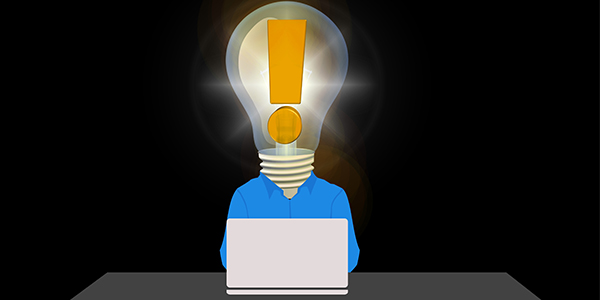









发布时间:2020年09月27日 来源:管理员
 立即收藏
立即收藏
脂肪酸与多动症

全世界有大约4%的儿童和2%的成年人深受多动症之苦,多动症患者很难集中注意力,更别提长时期维持注意力了,所以无论在学校、家里、工作中,还是在人际关系中都会造成各种各样的问题。然而,并不是有注意力问题的人就患有多动症,这就是为什么在诊断多动症的时候需要成熟的技术的原因,但无论你是想通过饮食来治疗多动症,还是只想提高注意力,了解一下饮食在注意力改善方面的重要性是十分有必要的。
人体中的化学物质含量
精神病学家认为多动症是由大脑中的化学失衡引起的,而药物可以帮助改善这种失衡。在大脑中,至少有化学物质(或“神经递质”)与多动症有关—多巴胺和去甲肾上腺素。如果体内的多巴胺和去甲肾上腺素水平过低,那么兴奋剂药物(如利他林®或阿德拉®)可能有助于使大脑释放更多德多巴胺和去甲肾上腺素。但是什么导致了人体中化学物质的不平衡呢?为什么这些化学物质的含量如此之低呢?这些化学物质从何而来?
大脑中的化学物质来自食物
多巴胺和去甲肾上腺素是由蛋白质组成的。人体将食物中的蛋白质如鱼、鸡和牛肉分解成氨基酸,其中一种氨基酸叫做酪氨酸。然后,人体利用特殊的化学反应,将酪氨酸转化为多巴胺和去甲肾上腺素,从而使脑细胞相互交流:
酪氨酸→多巴胺→去甲肾上腺素
因此,那些体内蛋白质低下的人(尤其是在早餐时),可能很难集中注意力。
大脑对欧米伽-3脂肪酸脂肪酸很挑剔
大脑中最喜欢的欧米伽-3脂肪酸叫做DHA。欧米伽脂肪酸有三种:α-亚麻酸(ALA)、二十二碳六烯酸 (DHA)和二十碳五烯酸(EPA)。ALA存在于植物和动物的食物中包括亚麻籽、核桃和奇异果。ALA在欧米伽-3脂肪酸中被成为母体,原因如下:
ALA → EPA → DHA
从这个途径来看,你可能会误认为只要摄入足量的ALA就完事具备了。但问题是我们身体很难将ALA转化为EPA和DHA,所以大约95%的ALA仍然以其本身形式存在。相反地,我们很容易将EPA转化为DHA。这意味着,为了确保我们的大脑获得足够的DHA,我们不仅要摄入DHA,还要保证足量的EPA。植物性食品不含任何EPA或DHA。所以美国家庭饮食中很难找到EPA和DHA,而这种物质的最好来源是野生动物的肉类,如冷水性、脂肪含量高的鱼(如鲑鱼和鲭鱼),以及自然饲养的动物肉类,如食草牛和食草鸡。这也是专业人士推荐欧米伽-3脂肪酸补剂的原因,该补剂通常是鱼油的形式,除此之外,还要藻类制成的补剂。
欧米伽-3脂肪酸和多动症之间的关系
在大多数针对欧米伽-3脂肪酸治疗多动症的研究显示,与药物治疗相比,欧米伽-3脂肪酸只有轻微的改善。根据现有的证据,不建议患有严重多动症患者使用欧米伽-3脂肪酸补剂代替传统的药物治疗。然而,也有证据表明虽然欧米伽-3脂肪酸的效果不明显,但其副作用相对温和,所以补充欧米伽-3脂肪酸,特别是高剂量的EPA,对那些不愿使用精神药理学药物治疗的家庭来说,这也不为是一种合理的治疗策略
研究表明,欧米伽-3脂肪酸的确有一定的益处,而EPA的最佳剂量似乎是每日补充300至600毫克。但是你不禁会问:大脑不是更喜欢DHA吗? 没错,尽管大脑喜欢并需要大量的DHA才能正常工作,但研究人员发现EPA补剂似乎比DHA补剂更有效。因为在短期研究内,结果发现EPA的效果更好,能够快速起到抗炎的作用。
治疗多动症的饮食小贴士
1. 早餐一定要吃一些蛋白质
2. 在饮食中加入富含欧米伽-3脂肪酸的食物(比如健康的肉类),或者每天补充至少300毫克的EPA
3.通过减少食用植物油、坚果和种子来降低欧米伽-6脂肪酸的摄入。
4.通过减少植酸摄入(尽量减少谷物、豆类、坚果和种子)来改善矿物质吸收。
5.如果缺铁,可以增加肉类的摄入量,减少植酸的摄入(谷物、豆类、坚果和种子)或服用血红素铁补剂。
6.通过减少植酸的摄入(尽量减少谷物、豆类、坚果和种子)来增加体内锌的含量,并在饮食中加入动物肉类,这同时可以补锌。
(英文来源:http://www.diagnosisdiet.com/adhd-and-diet-part-i/)
英文原文:
Attention! Is Your Diet Causing ADHD?
What is ADHD?
Attention Deficit/Hyperactivity Disorder, or ADHD, affects about 4% of children and about 2% of adults. ADHD is a complex condition and poorly named, because it is not really an attention deficit—but rather an inability to regulate attention. People with ADHD have trouble directing attention to what’s most important, and sustaining that attention for as long as required. This can cause all kinds of problems in school, at home, on the road, at work, and in relationships.
I would estimate that about a quarter of my students at Harvard University and Smith College present with a chief complaint of “difficulty concentrating.” When I worked at the Hallowell Center, which specializes in the treatment of people with attention-related disorders, 100% of clients came to me because of problems with focus and productivity. Nearly every psychiatric diagnosis—depression, anxiety, bipolar disorder, schizophrenia, substance abuse, and PTSD, just to name a few—can affect the ability to concentrate. Even common issues like stress or lack of sleep can impair attention. Therefore, the majority of people who have attention problems do not turn out to have ADHD after all, which is why a skilled psychiatric evaluation is so important in determining the underlying problem. Whether you are interested in treating ADHD with diet or simply improving your concentration, it is important to understand how diet affects attention regulation.
The Chemistry of Concentration
We psychiatrists are fond of saying that ADHD is caused by a chemical imbalance in the brain, and that medicines can help to correct the imbalance. There are at least two brain chemicals (or “neurotransmitters”) that seem to be involved in ADHD: dopamineand norepinephrine. These are tiny messengers that send signals from one brain cell to the next. If levels of dopamine or norepinephrine are too low, or if the system that processes these neurotransmitters is not functioning properly, a stimulant medication (like Ritalin® or Adderall®) might help by forcing brain cells to release higher amounts of these chemicals. But what causes the chemical imbalance in the first place? Why are the levels of these chemicals too low in the first place? Where do these chemicals come from?
Brain chemicals come from food.
After all, where else could they possibly come from? This seems so obvious, but many doctors don’t think about the connection. We are trained to think about which medications might correct the imbalance, not what causes it in the first place. Which foods does your body need to make these important chemicals?
Dopamine and norepinephrine are made from protein.
The body breaks down proteins in foods like fish, chicken, and beef, into amino acids, and one of these amino acids is called tyrosine. The body then uses special chemical reactions to turn tyrosine into the dopamine and norepinephrine brain cells need to communicate with each other:
TYROSINE → DOPAMINE → NOREPINEPHRINE
Therefore, those not getting enough protein (especially at breakfast), may have difficulty concentrating. For more information about proteins and amino acids, including daily requirements and best food sources, see my protein page.
The brain is picky about omega-3’s
The brain’s favorite omega-3 fatty acid is called DHA. There are 3 types of omega-3 fatty acids: ALA, DHA, and EPA. ALA is found in both plant and animal foods. Popular vegetarian sources of ALA include flaxseed, walnuts, and chia seeds. ALA is often called the “parent” omega-3 because of this pathway:
ALA → EPA → DHA
From looking at this pathway, you might think that if you eat enough ALA, you’re all set. But here’s the problem–the body has a very hard time converting ALA to EPA and DHA, so about 95% of it remains stuck in the form of ALA. However, we convert EPA to DHA very easily. This means that in order to be sure our brain gets enough DHA, we need to eat EPA and DHA themselves. Plant foods do not contain any EPA or DHA. EPA and DHA are hard to find in the typical American diet, because the best sources are wild animal foods, such as cold-water, fatty fish (like salmon and mackerel), and naturally-raised animals, such as grass-fed cows and pasture-raised chickens. This is why public health officials sometimes recommend omega-3 supplements. These supplements are typically in the form of fish oil, but there are also new vegan-friendly supplements available which are made from algae.
Omega-3’s and ADHD
There have been many studies of omega-3 fatty acids in the treatment of ADHD, but most have shown no benefit or only modest improvement compared to medications. However, many experts seem to agree with this conclusion, quoted from a recent review [Bloch 2011]:
“Based on the currently available evidence, using omega-3 fatty acid supplementation in lieu of traditional pharmacologic treatments is not recommended in children with significant ADHD symptoms. However, given the evidence of modest efficacy of omega-3 fatty acid supplementation and its relatively benign side-effect profile, omega-3 fatty acid supplementation, particularly with higher doses of EPA, is a reasonable treatment strategy as augmentation to traditional pharmacotherapy or for those families reticent to use psychopharmacologic agents.”
The bottom line is that medications seemed to work much better than omega-3 supplements. In the studies that did show a modest benefit from omega-3’s, the doses of EPA that seemed to work best were between 300 and 600 mg per day. But wait…doesn’t the brain prefer DHA? Yes. Even though the brain loves and needs lots of DHA to work properly, researchers find that EPA supplements seem to work much better than DHA supplements. As these were short-term studies, the thinking is that EPA works better because of its fast-acting anti-inflammatory properties.
Tips for treating ADHD with Diet
§ Be sure to eat some protein at breakfast
§ Include foods rich in omega-3 fatty acids in your diet (healthy animal foods), or take a daily supplement containing at least 300 mg of EPA
§ Reduce omega-6 intake by minimizing vegetable oils, nuts, and seeds
§ Improve mineral absorption by reducing phytic acid intake (minimize grains, beans, nuts and seeds)
§ If you have iron deficiency, increase meat intake and reduce phytic acid intake (grains, beans, nuts, and seeds) and/or take a heme iron supplement.
§ Improve zinc status by reducing phytic acid intake (minimize grains, beans, nuts, and seeds), and including animal foods in your diet. Zinc supplements may also be helpful.
§ If you eat a vegan or vegetarian diet, please see my vegan diets page for information about how to optimize your mineral status.
So, paying more attention to the quality of your diet just might help you pay more attention to…everything.
(英文来源:http://www.diagnosisdiet.com/adhd-and-diet-part-i/)
点击查看原文
